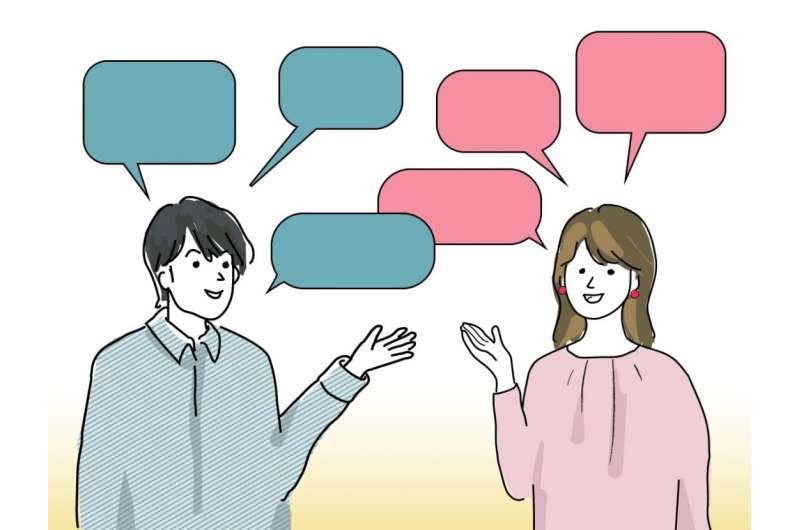This article has been reviewed according to Science X's editorial process and policies. Editors have highlighted the following attributes while ensuring the content's credibility:
fact-checked
trusted source
proofread
Code-switching in intercultural communication—Japanese vs. Chinese point of view

Osaka Metropolitan University scientists found that Japanese and Chinese, who are considered to have high-context cultures with a high degree of reliance on information shared by the speaker and listener, are code-switching from high-context cultures to low-context cultures when communicating with people from each other's country. Furthermore, the scientists found that the Japanese do not engage in much code-switching with Chinese students in Japan.
When people communicate, speakers and listeners use information shared by both the parties, which is referred to as context. It is believed that there are cultural differences in the degree of reliance on this context, with Westerners having a low-context culture, i.e., they speak more directly, and Easterners having a high-context culture, i.e., they are subtle and speak less directly.
Although Chinese are assumed to be in a high-context culture, Yamashina (2018) found that Chinese people are viewed as more direct speakers i.e., low-context cultural communicators by Japanese. A research team led by Professor Hiroshi Yama, from the Graduate School of Literature and Human Sciences, Osaka Metropolitan University, interpreted the results as that Chinese who know Japanese people try to be less context-dependent when communicating in Japanese.
This is called "code-switching." Generally, a low-context situation tends to arise when people engage in intercultural communication and interaction. The team found that Japanese and Chinese, who are considered to have high-context cultures, are code-switching from high-context cultures to low-context cultures when communicating with people from each other's country. Furthermore, it was found that the Japanese do not engage in much code-switching with Chinese students in Japan.
This study provides empirical evidence that low-context cultural situations may arise when people engage in intercultural communication. This study also suggests that low-context cultures are more likely to be formed in environments with substantial intercultural interaction.
"The results of this research can be developed as a socioecological explanatory theory of how cultural differences between low-/high-context emerge," explained Professor Yama. "The findings also provide hints for improving efficiency in actual communication situations. In the future, we will continue to examine the relationship between people's ability to adapt to life, contextual dependence, and code-switching ability."
Their findings were published in Global Networks.
More information: Changyi Wu et al, How do Japanese and Chinese view each other? Understanding the meaning of low‐context culture in intercultural communication, Global Networks (2023). DOI: 10.1111/glob.12440
Provided by Osaka Metropolitan University



















